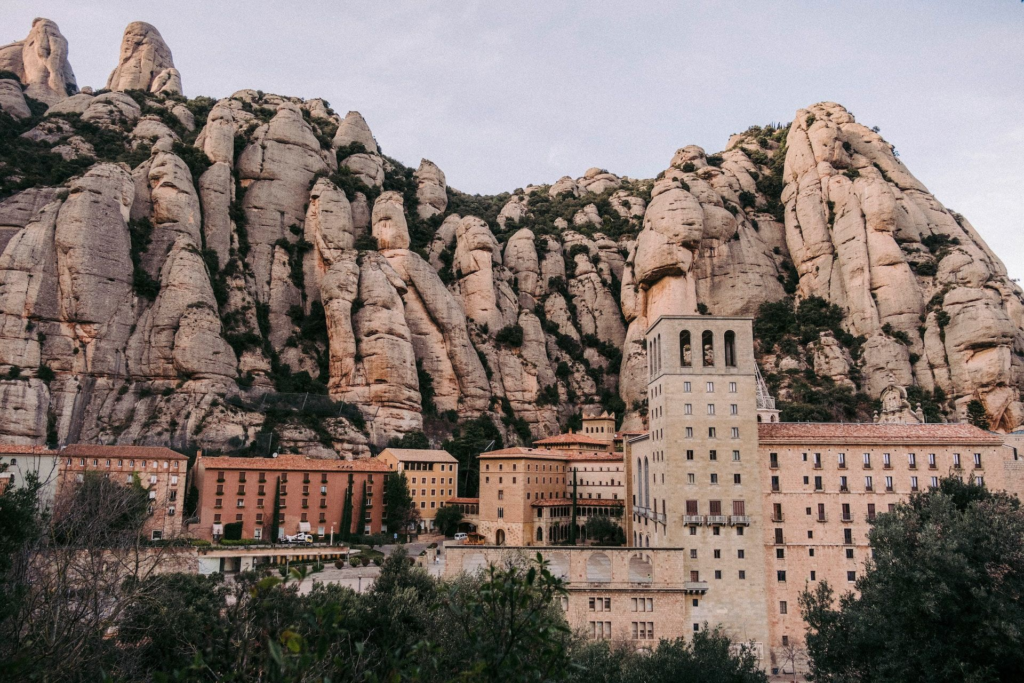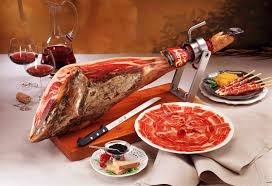Spain, a vibrant country located on the Iberian Peninsula in Southwestern Europe, is known for its rich history, diverse culture, and stunning landscapes. From the bustling streets of Barcelona to the historic charm of Seville and the picturesque beaches of Costa del Sol, Spain offers an array of experiences for every traveler. The country boasts a unique blend of influences, reflecting its historical significance as a crossroads of civilizations. With a passion for food, art, and celebration, Spain stands as a captivating destination that invites exploration and appreciation.
Table of Contents
Geography
Spain is situated on the Iberian Peninsula, bordered by Portugal to the west and France to the northeast. It is surrounded by the Mediterranean Sea to the south and east, the Atlantic Ocean to the northwest, and the Bay of Biscay to the north. Covering an area of approximately 505,990 square kilometers, Spain is the fourth-largest country in Europe. The country’s diverse geography includes mountains, plains, and coastlines, contributing to its varied climate and ecosystems.
The Pyrenees mountain range separates Spain from France, offering stunning landscapes and opportunities for outdoor activities. The southern region features the Sierra Nevada mountains, home to the highest peak in mainland Spain, Mulhacén, at 3,482 meters. Spain’s coastlines are dotted with beautiful beaches and charming towns, while its interior is characterized by historic cities and fertile agricultural land. The diverse geography creates a rich tapestry of natural beauty that attracts visitors from around the world.
States of Spain
Spain is divided into 17 autonomous communities, which are often referred to as regions or states. In addition to these autonomous communities, Spain also has two autonomous cities, Ceuta and Melilla, located in North Africa. Each autonomous community has a considerable degree of self-government, including its own parliament and government.
| No. | Autonomous Community | Capital |
|---|---|---|
| 1 | Andalusia | Seville |
| 2 | Aragón | Zaragoza |
| 3 | Asturias | Oviedo |
| 4 | Balearic Islands | Palma |
| 5 | Basque Country (Euskadi) | Vitoria-Gasteiz |
| 6 | Canary Islands | Santa Cruz de Tenerife, Las Palmas de Gran Canaria |
| 7 | Cantabria | Santander |
| 8 | Castile and León | Valladolid |
| 9 | Castile-La Mancha | Toledo |
| 10 | Catalonia | Barcelona |
| 11 | Extremadura | Mérida |
| 12 | Galicia | Santiago de Compostela |
| 13 | La Rioja | Logroño |
| 14 | Madrid | Madrid |
| 15 | Murcia | Murcia |
| 16 | Navarre | Pamplona |
| 17 | Valencian Community | Valencia |
History
Spain’s history is marked by a series of significant events and influences that have shaped its identity. The Iberian Peninsula has been inhabited since prehistoric times, with various cultures and civilizations leaving their mark. The Romans established control over the region in the 2nd century BCE, leading to the development of cities, roads, and aqueducts that still exist today. Roman rule lasted for several centuries, and the influence of Latin language and culture remains evident in modern Spain.
Following the fall of the Western Roman Empire, the Visigoths ruled Spain until the Muslim conquest in the early 8th century. The Moors established a flourishing civilization, introducing advancements in science, art, and architecture. The period of Muslim rule saw the construction of stunning architectural wonders, such as the Alhambra in Granada and the Great Mosque of Córdoba. This era of coexistence between Christians, Muslims, and Jews laid the foundation for Spain’s rich cultural diversity.
The Reconquista, a series of campaigns to reclaim the Iberian Peninsula, culminated in 1492 when the Catholic Monarchs, Ferdinand and Isabella, captured Granada. This event marked the end of Muslim rule and the unification of Spain under Christian leadership. The same year, Christopher Columbus embarked on his voyage to the Americas, leading to Spain’s emergence as a global empire. The following centuries saw Spain expand its influence across the globe, establishing colonies in the Americas and beyond, which significantly impacted its culture, economy, and identity.
Top Ten Most Famous Places to Visit in Spain
La Sagrada Familia

La Sagrada Familia, an iconic basilica in Barcelona, is a masterpiece designed by architect Antoni Gaudí. Construction began in 1882 and remains ongoing, with the basilica expected to be completed in the coming years. The unique architecture features intricate facades, towering spires, and stunning stained glass windows that create a mesmerizing atmosphere. Visitors can explore the basilica’s interior, marvel at Gaudí’s innovative design, and enjoy panoramic views from the towers.
Alhambra

The Alhambra, a UNESCO World Heritage site in Granada, is a breathtaking palace and fortress complex that showcases Moorish architecture at its finest. Built in the 13th century, the Alhambra features stunning gardens, intricate tile work, and exquisite detailing. Visitors can explore the Nasrid Palaces, the Generalife gardens, and the impressive fortress, all while taking in the stunning views of the Sierra Nevada mountains.
Park Güell

Park Güell is another iconic work by Antoni Gaudí, located in Barcelona. This colorful park is known for its whimsical architecture, vibrant mosaics, and stunning views of the city. The park features winding pathways, artistic sculptures, and the famous dragon fountain at the entrance. Visitors can wander through the park’s gardens, enjoy the unique designs, and take in the panoramic views of Barcelona.
Prado Museum

The Prado Museum in Madrid is one of the world’s premier art museums, housing an extensive collection of European art from the 12th to the early 20th centuries. The museum features works by renowned artists such as Velázquez, Goya, and Bosch. Visitors can explore the vast galleries, admire masterpieces, and learn about the history of art in Spain and beyond.
Casa Batlló

Casa Batlló is another architectural gem designed by Antoni Gaudí, located in Barcelona. This unique building is characterized by its organic shapes, vibrant colors, and intricate detailing. The façade resembles a dragon’s back, and the interior is equally stunning, with flowing lines and imaginative designs. Visitors can take guided tours to learn about Gaudí’s innovative techniques and the history of this iconic landmark.
Santiago de Compostela

Santiago de Compostela is a historic city in northwest Spain, known for its stunning cathedral and as the final destination of the Camino de Santiago pilgrimage. The cathedral, a UNESCO World Heritage site, is an architectural masterpiece and an important pilgrimage site. Visitors can explore the historic streets, visit the cathedral, and learn about the rich history of the pilgrimage.
Ibiza

Ibiza, one of the Balearic Islands, is famous for its vibrant nightlife, stunning beaches, and crystal-clear waters. The island is known for its lively clubs, beach parties, and beautiful sunsets. Visitors can relax on the beaches, explore charming villages, and experience the island’s renowned nightlife, making it a popular destination for party-goers and relaxation seekers alike.
Montserrat

Montserrat is a stunning mountain range located near Barcelona, known for its unique rock formations and the famous Benedictine monastery, Santa Maria de Montserrat. The monastery houses the revered statue of the Black Madonna and offers breathtaking views of the surrounding landscape. Visitors can hike the trails, explore the monastery, and enjoy the serene atmosphere of this spiritual destination.
Bilbao’s Guggenheim Museum

The Guggenheim Museum in Bilbao is a modern architectural marvel designed by Frank Gehry. The museum is known for its innovative design and contemporary art collection, featuring works by renowned artists such as Jeff Koons and Richard Serra. Visitors can explore the museum’s exhibitions, enjoy the surrounding waterfront, and appreciate the striking architecture.
Valencia’s City of Arts and Sciences

The City of Arts and Sciences in Valencia is an architectural complex that showcases futuristic design and cultural attractions. The complex includes a science museum, planetarium, aquarium, and opera house. Visitors can explore the various attractions, enjoy interactive exhibits, and take in the stunning architecture, making it a must-visit destination for families and science enthusiasts.
Culture
The official language of Spain is Spanish (Castilian), which is spoken by the majority of the population. However, Spain is a linguistically diverse country with several regional languages, including Catalan, Galician, and Basque. These languages reflect the rich cultural heritage of the different regions and are often spoken alongside Spanish. Each region has its own unique traditions and dialects, contributing to the vibrant tapestry of Spanish culture.
The Spanish lifestyle is characterized by a strong emphasis on community, family, and celebration. Social gatherings, fiestas, and meals are essential parts of daily life, with family and friends coming together to enjoy each other’s company. The famous siesta, a midday break, is still observed in many parts of the country, allowing for relaxation and socializing. Spanish cuisine, known for its diversity and flavors, plays a central role in the culture, with tapas and paella being popular dishes enjoyed by locals and visitors alike.
Spain is known for its rich traditions and customs, many of which are rooted in its history and regional diversity. Festivals are an integral part of Spanish culture, with events such as La Tomatina in Buñol, the Running of the Bulls in Pamplona, and Semana Santa (Holy Week) celebrated with great fervor. Flamenco music and dance, originating from Andalusia, are vital expressions of Spanish culture, showcasing passion and artistry. The country’s vibrant art scene, with influences from famous artists like Picasso and Dalí, further reflects its rich cultural heritage.
Festivals
Spain hosts numerous festivals throughout the year, celebrating its rich cultural heritage and traditions. One of the most famous events is La Semana Santa (Holy Week), which features elaborate processions and religious observances in cities like Seville and Málaga. Another notable festival is La Feria de Abril in Seville, a lively celebration of flamenco, food, and traditional costumes. The Fallas festival in Valencia showcases stunning fireworks, giant sculptures, and street parties, while La Tomatina in Buñol involves a massive tomato fight, attracting thousands of participants. These festivals highlight the joyous spirit of Spanish culture and its emphasis on community and celebration.
Economy
Spain has a diverse and dynamic economy, ranking as the fourth-largest in the Eurozone. The country’s economy is driven by various sectors, including tourism, manufacturing, agriculture, and services. Tourism plays a significant role, with millions of visitors flocking to Spain each year to explore its rich history and cultural attractions. The manufacturing sector is known for automotive production, textiles, and food processing. Spain is also a major agricultural producer, known for its olive oil, wine, and citrus fruits. The country has been recovering from the economic challenges of the past decade, focusing on innovation, sustainability, and improving competitiveness in the global market.
Tourism
Tourism is a vital part of Spain’s economy, contributing significantly to the country’s GDP and employment. Spain consistently ranks among the most popular tourist destinations in the world, attracting visitors with its rich history, cultural heritage, and diverse landscapes. Major cities like Barcelona, Madrid,
and Valencia are popular for their landmarks, art, and vibrant atmospheres. The country’s beautiful coastline, charming villages, and UNESCO World Heritage sites further enhance its appeal. Spain’s commitment to sustainable tourism initiatives aims to preserve its natural and cultural treasures while providing authentic experiences for travelers.
Top Eight Most Famous Food of Spain








Interesting Facts About Spain
- Spain is the birthplace of tapas, small dishes often served with drinks in bars.
- The country has a unique tradition of siesta, a midday break for relaxation.
- Spain is home to the world’s second-largest number of UNESCO World Heritage sites, after Italy.
- The Spanish national anthem has no lyrics, making it one of the few anthems in the world without words.
- Flamenco dance originated in Andalusia and is recognized as an important cultural heritage.
- The Running of the Bulls takes place annually during the San Fermín festival in Pamplona.
- Spain has 17 autonomous communities, each with its own unique culture and traditions.
- The country is known for its diverse architecture, from Gothic cathedrals to modernist masterpieces.
- Spain produces over 44% of the world’s olive oil, making it a global leader in production.
- The famous artist Pablo Picasso was born in Málaga, Spain, and his works are celebrated worldwide.
Future Perspective
Looking ahead, Spain is focused on sustainable development and innovation to address challenges and seize opportunities. The government aims to enhance the digital economy, invest in renewable energy, and promote eco-friendly tourism. Spain’s rich cultural heritage and diverse landscapes are seen as key assets for attracting visitors and boosting the economy. By fostering entrepreneurship and improving infrastructure, Spain aims to remain a leading destination for travelers seeking unique experiences and cultural richness.
Conclusion
Spain is a captivating country that offers a unique blend of history, culture, and natural beauty. From its stunning architecture and rich traditions to its vibrant festivals and diverse landscapes, Spain invites travelers to explore its many facets. As the country continues to evolve and embrace sustainability, it remains a prominent destination in Europe, where every corner tells a story, and every moment is filled with warmth and passion.

